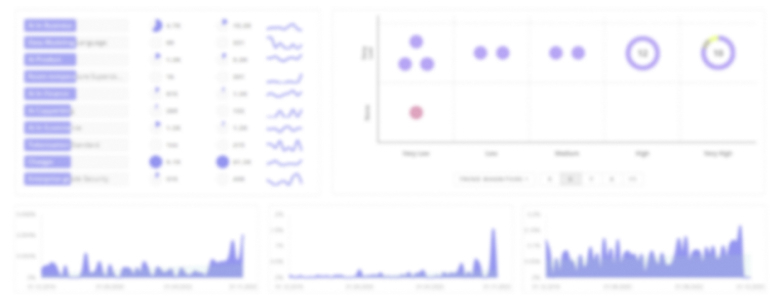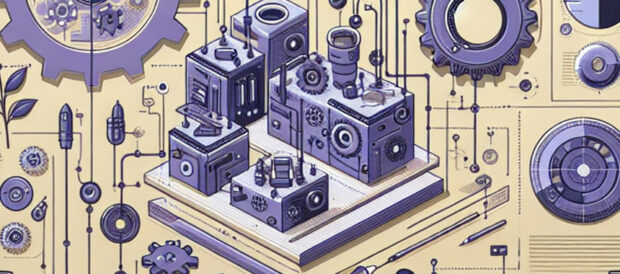
Equipment Manufacturing Report
: Analysis on the Market, Trends, and TechnologiesThe equipment manufacturing sector is undergoing a disciplined shift toward precision, digitalization, and supply-chain resilience, driven by measured market expansion and concentrated patent activity; the internal equipment manufacturing trend report records over 400 patents filed in the last three years, signalling intensified R&D focus. Revenue and funding patterns in the internal data show sizable industrial scale—total funding across the topic is $6.18B and total annual company revenue is $103.68B—while external market research forecasts reinforce continued end-market demand (for example, the automotive equipment subsector is forecast to grow at a 9.5% CAGR to 2029) Automotive Manufacturing Equipment Market 2025: Detailed Insights into Market Size and Future Growth and the metalworking equipment market anticipates steady adoption of automated, connected machines Metalworking Equipment Market Size, Share & Trends Analysis Report.
This article was last updated 4 days ago. If you find any info is missing, let us know!
Topic Dominance Index of Equipment Manufacturing
The Dominance Index of Equipment Manufacturing looks at the evolution of the sector through a combination of multiple data sources. We analyze the distribution of news articles that mention Equipment Manufacturing, the timeline of newly founded companies working in this sector, and the share of voice within the global search data
Key Activities and Applications
- Precision machining and multi-axis CNC operations—central to aerospace, automotive, and medical manufacturing; companies emphasize 5-axis capability for complex geometries.
- Automated assembly and turnkey lines—design and delivery of integrated production cells (assembly, testing, feeding, vision) to reduce cycle time and labor exposure AGME Automated assembly solutions.
- Specialized component fabrication—high-value parts (gears, curvic couplings, precision splines) for defense and aerospace with strict tolerances and certification workflows Equitable Engineering Company.
- Additive manufacturing for low-volume, complex parts and tooling—applied as complementary capability for rapid prototyping and select end-use components AMufacture.
- Equipment upgrades, predictive maintenance, and manufacturing IT—retrofits and software (MES, data platforms) to enable realtime monitoring and yield improvement Instrumental Inc.
Emergent Trends and Core Insights
- Smart factory adoption is maturing from pilot projects to factory-wide platforms; manufacturers use AI-enabled inspection and MES integration to cut rework and compress ramp times, which aligns with claims that digital adopters see meaningful productivity gains Instrumental Inc. and industry-level Industry 4.0 narratives Metal Fabrication Equipment Market.
- Nearshoring and footprint diversification are rising priorities because geopolitical and logistics risk raises the value of regional capacity; contract manufacturers with multi-country operations position to capture this demand EastWestMFG Corporation.
- Additive manufacturing moves from prototyping to selective production for complex or weight-optimized parts; niche AM contract manufacturers are monetizing traceability and post-processing capabilities AMufacture.
- Market bifurcation: large system integrators continue to consolidate via M&A while smaller specialists win projects requiring speed, customization, or certifications; acquisition activity is observable in company-level changes (for example, small acquisitions noted in the corporate dataset).
- Talent and skills shortage is a bottleneck; workforce programs and training initiatives are gaining traction to supply machinists and automation technicians America’s Cutting Edge (ACE).
Technologies and Methodologies
- Advanced CNC (5-axis and multi-axis) and high-precision tooling—core production tech for tight-tolerance components Aileron CNC.
- Additive manufacturing (SLS, MJF, DMLS) used for complex geometries, lightweighting, and tooling; paired with digital traceability and secure digital warehousing AMufacture.
- Robotic automation and integrated assembly lines (robotic arms, vision-guided feeding, torque control) to increase throughput and reduce manual variability AGME Automated assembly solutions.
- Manufacturing AI, quality-data platforms, and MES integration for defect detection, root-cause analysis, and predictive maintenance to reduce scrap and accelerate new-product introduction Instrumental Inc.
- Modular, reconfigurable equipment design to support small-batch customization and fast changeover, improving asset utilization as product variety grows EQUIPMENT MANUFACTURING: A Strategic Analysis of Innovation and Future Trajectories.
Equipment Manufacturing Funding
A total of 239 Equipment Manufacturing companies have received funding.
Overall, Equipment Manufacturing companies have raised $5.5B.
Companies within the Equipment Manufacturing domain have secured capital from 540 funding rounds.
The chart shows the funding trendline of Equipment Manufacturing companies over the last 5 years
Equipment Manufacturing Companies
- AGME Automated assembly solutions—European supplier of tailored automatic assembly machines and turnkey lines covering riveting, pressing, feeding, vision inspection, and testing. Strength lies in configurable assembly modules exported across >25 countries, serving automotive and appliance OEMs.
- AMufacture—UK-based AM contract manufacturer offering end-to-end additive manufacturing (HP MJF, SLS) plus finishing and secure digital warehousing. Positions on sustainability by using high recycled-polymer content and monetizes traceability for regulated industries.
- PEKO Precision Products—Vertically integrated contract manufacturer for large electromechanical assemblies. Offers NPI support, systems engineering, and large footprint manufacturing space for complex machine builds; suited for OEMs needing turnkey equipment.
- Instrumental Inc.—Manufacturing AI and data platform vendor that reduces electronic manufacturing waste and improves yield through automated inspection and root-cause analytics. Its platform enables faster time-to-market for electronics and high-volume assemblies.
Uncover actionable market insights on 5.7K companies driving Equipment Manufacturing with TrendFeedr's Companies tool.
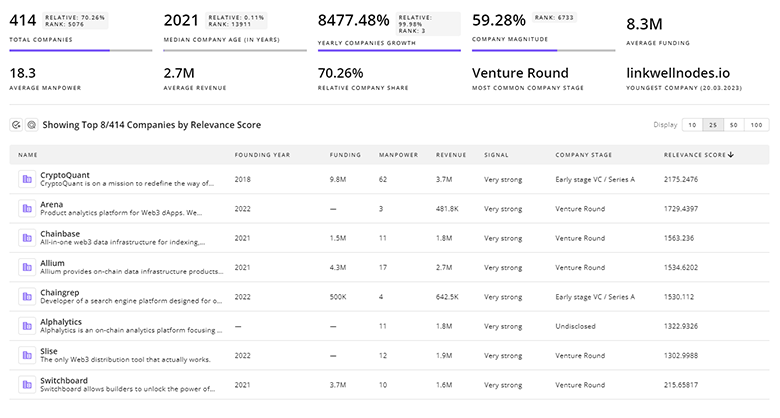
5.7K Equipment Manufacturing Companies
Discover Equipment Manufacturing Companies, their Funding, Manpower, Revenues, Stages, and much more
Equipment Manufacturing Investors
Get ahead with your investment strategy with insights into 433 Equipment Manufacturing investors. TrendFeedr’s investors tool is your go-to source for comprehensive analysis of investment activities and financial trends. The tool is tailored for navigating the investment world, offering insights for successful market positioning and partnerships within Equipment Manufacturing.
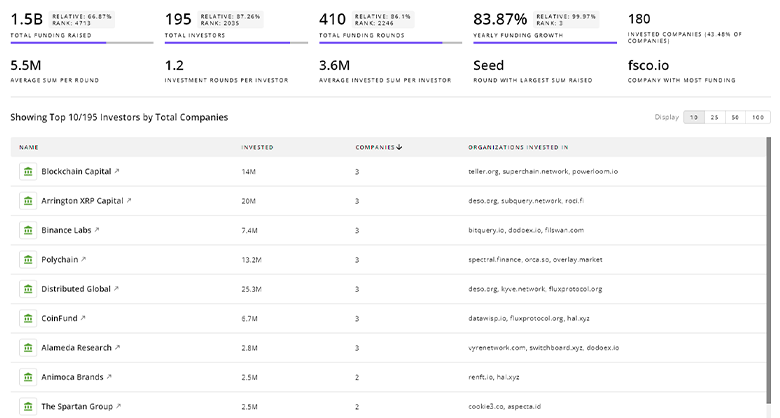
433 Equipment Manufacturing Investors
Discover Equipment Manufacturing Investors, Funding Rounds, Invested Amounts, and Funding Growth
Equipment Manufacturing News
TrendFeedr’s News feature offers access to 2.1K news articles on Equipment Manufacturing. The tool provides up-to-date news on trends, technologies, and companies, enabling effective trend and sentiment tracking.
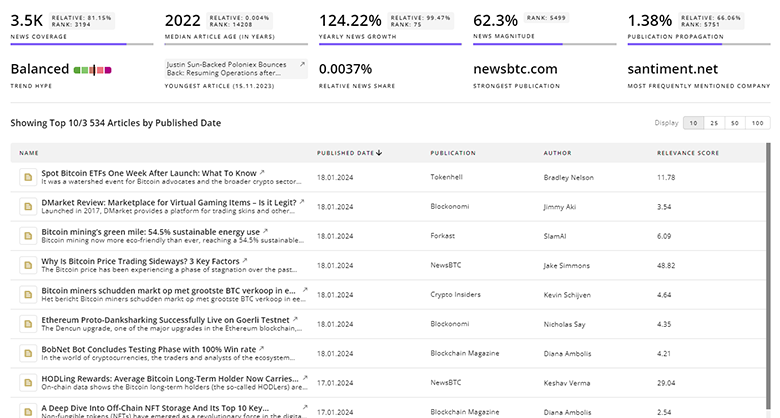
2.1K Equipment Manufacturing News Articles
Discover Latest Equipment Manufacturing Articles, News Magnitude, Publication Propagation, Yearly Growth, and Strongest Publications
Executive Summary
Equipment manufacturing is transitioning from discrete machining and hard automation to a layered model where precision hardware, digital platforms, and flexible production co-exist. Evidence in patent filings (>400 recent filings), funding totals ($6.18B topic funding) and external market forecasts (double-digit subsector CAGRs in some segments) point to an industry with healthy demand for both scale and specialization. Strategic winners will combine high-spec manufacturing capabilities (5-axis CNC, certified workflows), data-driven quality and uptime tools, and geographically diversified capacity to serve customers seeking lower lead times and higher compliance. For investors and operators, priorities are targeted automation investments that shorten ramp cycles, selective adoption of additive for high-value part sets, and active workforce development to close the skills gap—moves that preserve margins while meeting the market’s tightening precision and traceability requirements.
Have expertise in trends or technology? Your input can enrich our content — consider collaborating with us!
